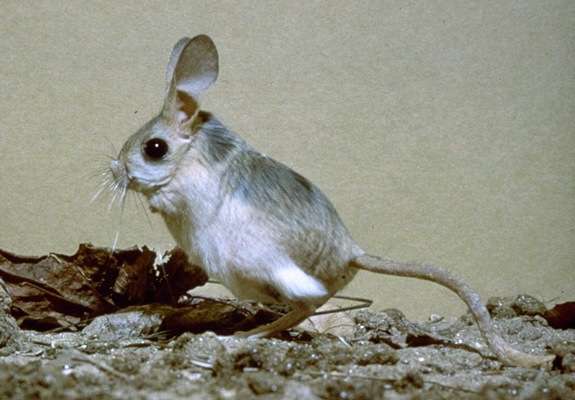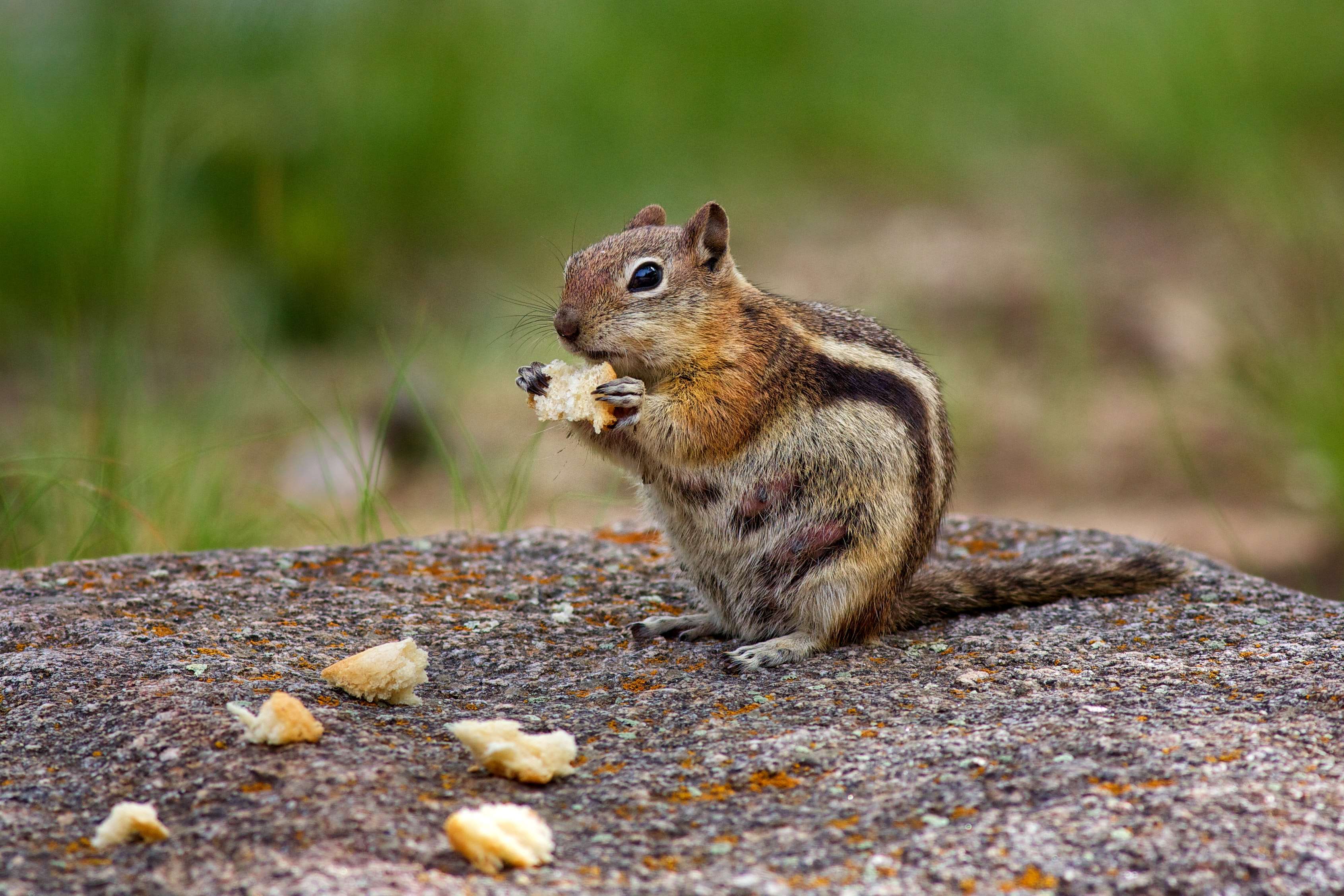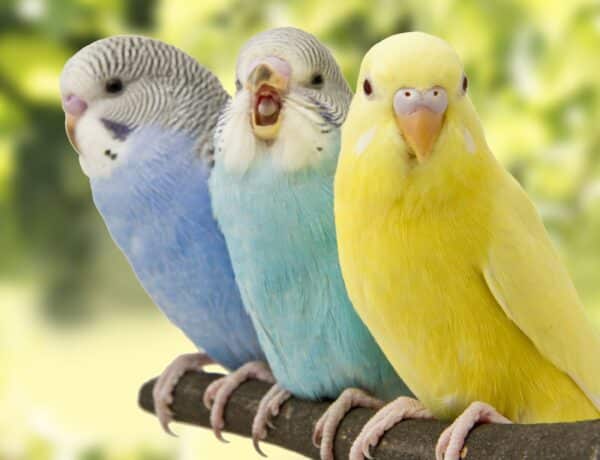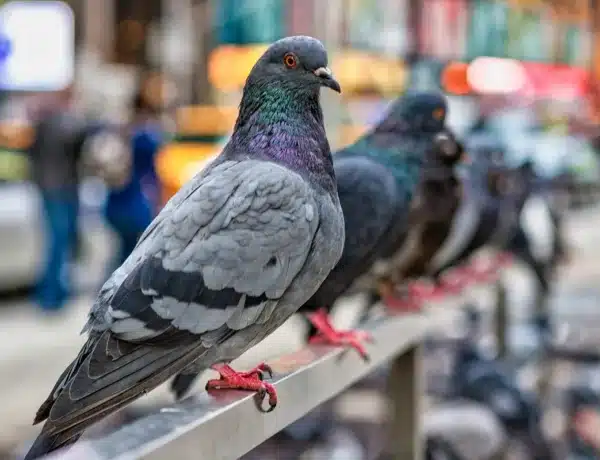Introduction
What Are The Small Five Animals? The small five animals refer to a group of fascinating creatures that are often overlooked in the African wildlife. While the Big Five, consisting of the lion, leopard, rhinoceros, elephant, and buffalo, steal the spotlight, the small five animals offer a unique and equally captivating experience for wildlife enthusiasts. These diminutive creatures are known for their intriguing behavior, impressive adaptations, and their ability to thrive in some of the harshest environments on the continent.
One of the most iconic members of the small five is the elephant shrew. Despite its name, the elephant shrew is not related to elephants or shrews but is actually a distant relative of elephants and manatees. These tiny mammals are characterized by their long snouts, which they use to probe the ground in search of insects and other small invertebrates. With their incredible agility and speed, elephant shrews can easily navigate through dense vegetation, making them a challenge to spot in the wild.

What is the Big 5 vs small 5?
While the term ‘Big Five’ was given to the most dangerous African animals during colonialist times, the little five are five small African animals that share part of their name with the Big 5 (lion, elephant, rhino, buffalo, leopard).
The Big 5 vs small 5 refers to two different groups of animals found in Africa. These groups are categorized based on their size, popularity, and significance in the African wildlife. The Big 5 consists of the African lion, African elephant, Cape buffalo, African leopard, and rhinoceros. These animals are considered the most iconic and sought-after species to spot on a safari in Africa.
The term “”Big 5″” was originally coined by big-game hunters to describe the five most challenging animals to hunt on foot. However, over time, the term has evolved to represent the top five animals that tourists and wildlife enthusiasts hope to see during their African safari. The Big 5 are known for their size, strength, and majestic presence, making them a symbol of Africa’s rich biodiversity.
On the other hand, the small 5 refers to a group of smaller animals that are often overshadowed by the fame of the Big 5. The small 5 includes the elephant shrew, rhinoceros beetle, ant lion, buffalo weaver, and leopard tortoise. These animals are not as well-known or as widely sought-after as the Big 5, but they still play an important role in the African ecosystem.
Why are they called the small 5 animals?
The term little five was brought to life after the marketing success of the big five for tourist safaris in Southern Africa. This prompted a call by nature conservationists for visitors to acknowledge the smaller, less noticed, but still enigmatic animals of the savanna (called bushveld in South Africa).
The term “”small 5 animals”” refers to a group of animals that are often overlooked in favor of the more famous and iconic members of the African wildlife. Despite their small size, these animals play a crucial role in the ecosystem and have their own unique characteristics that make them worthy of attention.
The small 5 animals include the elephant shrew, the ant lion, the rhinoceros beetle, the buffalo weaver, and the leopard tortoise. Each of these animals has its own distinct features and behaviors that set them apart from other species.
The elephant shrew, for example, is a small mammal that is known for its long nose, which resembles that of an elephant. This unique adaptation allows it to sniff out insects and other small prey in the underbrush. Despite its small size, the elephant shrew is a fast and agile runner, making it difficult for predators to catch.
The ant lion, on the other hand, is an insect that is known for its fascinating hunting technique. It creates a conical pit in the sand and waits for unsuspecting prey to fall in. Once the prey falls into the pit, the ant lion uses its sharp jaws to capture and consume it. This unique hunting behavior has earned the ant lion a place among the small 5 animals.
What are the tiny Big Five?
Here is the must-see list of the “Little Five”. They are the Elephant shrew, Ant Lion, Rhinoceros Beetle, buffalo weave, and Leopard Tortoise. Africa’s big game is awesome, but there is also a wealth of interesting smaller species including remarkable birding, small game and strange insects.
The tiny Big Five refers to a group of small animals that are often overlooked when discussing wildlife in Africa. While the traditional Big Five – lions, elephants, buffalos, leopards, and rhinoceros – are iconic and well-known, the tiny Big Five consists of creatures that are equally fascinating and important to the ecosystem.
The first member of the tiny Big Five is the antlion. Despite its small size, the antlion is a formidable predator. It is known for its unique hunting technique, where it digs cone-shaped pits in sandy soil and waits at the bottom for unsuspecting prey to fall in. Once trapped, the antlion uses its sharp jaws to capture and consume its victims. While they may not be as majestic as lions or elephants, antlions play a crucial role in controlling insect populations and maintaining the balance of the ecosystem.
The second member of the tiny Big Five is the rhinoceros beetle. These beetles are named for their large, horn-like structures on their heads, which resemble those of rhinoceroses. Despite their intimidating appearance, rhinoceros beetles are harmless to humans and primarily feed on decaying plant matter. They are known for their impressive strength, as they can lift objects up to 850 times their own weight. Rhinoceros beetles are important decomposers, helping to break down dead organic material and recycle nutrients back into the soil.
The third member of the tiny Big Five is the leopard tortoise. While not as flashy as its larger cousin, the leopard tortoise is a fascinating creature in its own right. It is the fourth largest species of tortoise in the world and can reach impressive sizes. Leopard tortoises are herbivores and primarily feed on grasses and other vegetation. They play a crucial role in seed dispersal, as the seeds they consume pass through their digestive system and are deposited in different locations, aiding in the growth and diversity of plant species.
The fourth member of the tiny Big Five is the buffalo weaver. These small birds are known for their intricate nest-building skills. They construct large, communal nests made of twigs and grass, which can house multiple breeding pairs. Buffalo weavers are highly social birds and live in colonies, where they engage in cooperative breeding and defense of their nests. Their nests provide shelter”
What are the names of 5 shy animals?
The shy five animals of Africa are Aardvark, Aardwolf, Bat-eared Fox, Meerkat, and Porcupine.
Shyness is a common trait among many animals, and it often serves as a defense mechanism to avoid potential threats or predators. While some animals are naturally more outgoing and social, others prefer to keep to themselves and avoid unnecessary interactions. In this article, we will explore the names of five shy animals and learn more about their behavior and characteristics.
1. Fennec Fox: The fennec fox is a small nocturnal animal known for its shy and elusive nature. Found in the deserts of North Africa, this fox has large ears and a bushy tail, which helps it regulate body temperature in extreme heat. Despite its small size, the fennec fox is an excellent digger and can create complex burrows to hide from predators.
2. Sloth: Sloths are famously known for their slow-moving and solitary lifestyle. These arboreal mammals spend most of their time hanging upside down from trees in the rainforests of Central and South America. Due to their slow metabolism, sloths have a low energy level and prefer to conserve their energy by avoiding unnecessary movements and interactions.
3. Quokka: Quokkas are small marsupials native to Western Australia. They are often referred to as the “”happiest animal in the world”” due to their friendly and cheerful appearance. However, despite their seemingly outgoing nature, quokkas are actually quite shy and prefer to avoid direct contact with humans or other animals.
4. Axolotl: The axolotl is a unique amphibian species found in the lakes of Mexico. Known for its regenerative abilities, this shy creature has the remarkable ability to regrow its limbs, spinal cord, and even parts of its heart and brain. Axolotls are primarily nocturnal and spend most of their time hiding in the underwater vegetation.
5. Red Panda: The red panda is a small mammal native to the eastern Himalayas and southwestern China. Despite its name, the red panda is not closely related to the giant panda. These shy animals are primarily arboreal and spend most of their time in trees, feeding on bamboo leaves and fruits. Due to habitat loss and poaching, the red panda is currently classified as an endangered species.
What are the special five animals?
“The Samburu special five” are unique wildlife species found in Samburu Game Reserve in Kenya. They are: Beisa Oryx, Reticulated Giraffe, Grevy’s Zebra, Gerenuk and Somali ostrich, and are endemic to Samburu ecosystem. Samburu stands out for having the special five.
Special five animals refer to a group of animals that are considered unique or extraordinary in some way. These animals may possess distinct characteristics, exhibit exceptional behavior, or have a significant impact on their ecosystems. The term “”special five animals”” is often used in the context of wildlife tourism, where tourists seek out these particular animals for a memorable and exciting experience.
One of the most well-known special five animals is the African elephant. These majestic creatures are the largest land animals on Earth and are known for their impressive size and strength. African elephants are highly intelligent and have complex social structures, making them fascinating to observe in their natural habitat. They are also considered a keystone species, playing a crucial role in maintaining the balance of their ecosystems.
The second animal that is often included in the special five is the Bengal tiger. These magnificent big cats are known for their striking appearance and powerful hunting abilities. Bengal tigers are native to the Indian subcontinent and are critically endangered due to habitat loss and poaching. Spotting a Bengal tiger in the wild is a rare and thrilling experience, making them a popular choice among wildlife enthusiasts.
The third animal on the special five list is the giant panda. These adorable creatures are native to China and are known for their distinctive black and white fur. Giant pandas are classified as endangered, with only around 1,800 left in the wild. They are highly specialized bamboo eaters and spend most of their time foraging for this food source. Due to their unique appearance and conservation status, giant pandas are often considered a symbol of wildlife conservation.
The fourth animal that is commonly included in the special five is the African lion. Known as the “”king of the jungle,”” African lions are iconic and powerful predators. They are social animals, living in prides consisting of multiple females, their offspring, and a dominant male. African lions are known for their distinctive manes and impressive hunting skills, making them a popular attraction for wildlife enthusiasts on safari.

Can you provide a list of the small five animals?
The small five animals, also known as the little five, are a group of small creatures that have gained popularity in the African safari tourism industry. The small five animals include the elephant shrew, the ant lion, the rhinoceros beetle, the buffalo weaver, and the leopard tortoise.
The elephant shrew, also known as the sengi, is a small mammal that resembles a mouse with a long snout. It is known for its incredible speed and agility, making it difficult to spot in the wild. The ant lion is an insect that is famous for its unique hunting technique. It creates funnel-shaped traps in sandy areas and waits for unsuspecting prey to fall into its trap.
The rhinoceros beetle is a large beetle that gets its name from the horn-like projection on its head. It is known for its impressive strength and ability to carry objects many times its own weight. The buffalo weaver is a bird that is commonly found in savannah grasslands. It is known for its intricate nest-building skills and its distinctive red eyes. Lastly, the leopard tortoise is a reptile that gets its name from the leopard-like spots on its shell. It is a slow-moving creature that can live for over 100 years.
Which animals are considered part of the small five?
The small five animals are a group of five small creatures that are commonly found in the African savannah. These animals are the elephant shrew, the ant lion, the buffalo weaver, the leopard tortoise, and the rhinoceros beetle. Each of these animals has its own unique characteristics and plays an important role in the ecosystem.
The elephant shrew, also known as the sengi, is a small mammal that resembles a mouse with a long nose. It is known for its incredible speed and agility, making it difficult for predators to catch. The ant lion is an insect that is famous for its unique hunting technique. It creates funnel-shaped traps in sandy areas and waits for unsuspecting prey to fall in.
The buffalo weaver is a bird that is known for its impressive nest-building skills. It constructs large, intricate nests made of twigs and grass, often in acacia trees. The leopard tortoise is a reptile that gets its name from its distinctive shell pattern, which resembles the spots of a leopard. It is a slow-moving creature that relies on its shell for protection.
The rhinoceros beetle is an insect that is named after its large horn-like structure on its head. It is one of the largest beetles in the world and is known for its strength. These small five animals can be found in various regions of Africa, particularly in savannah habitats where they have adapted to thrive. They each have their own unique characteristics and contribute to the biodiversity of their ecosystems.
What are the names of the five small animals?
The five small animals that make up the small five are the elephant shrew, the ant lion, the rhinoceros beetle, the buffalo weaver, and the leopard tortoise. Each of these animals is unique in its own way and plays an important role in their respective ecosystems.
The elephant shrew, also known as the sengi, is a small mammal that resembles a miniature antelope. It is known for its long nose and incredible speed, which allows it to dart through the underbrush in search of insects and other small prey. The ant lion, on the other hand, is an insect that is famous for its unique hunting technique. It creates funnel-shaped traps in sandy soil and waits for unsuspecting ants to fall in, where it then captures and devours them.
The rhinoceros beetle is a large beetle that gets its name from the horn-like projection on its head, which resembles that of a rhinoceros. These beetles are known for their impressive strength and can often be found pushing and wrestling with each other for dominance. The buffalo weaver is a small bird that is known for its intricate nest-building skills. These birds construct large, communal nests made of twigs and grass, which can house multiple generations of birds at once. Lastly, the leopard tortoise is a reptile that gets its name from the leopard-like spots on its shell. These tortoises are known for their slow and steady nature, and can often be found grazing on grass and vegetation.
Can you describe the characteristics of the small five animals?
The small five animals, also known as the little five, are a group of small creatures found in the African savannah. Each of these animals has unique characteristics that make them fascinating to observe.
The elephant shrew is one of the small five and is known for its long snout and slender body. It is incredibly agile and can move quickly through the grasslands. The elephant shrew is also known for its excellent hearing and can detect the slightest sounds, making it a skilled predator.
The ant lion is another member of the small five and is famous for its unique hunting technique. It creates funnel-shaped traps in the sand and waits for unsuspecting prey to fall in. The ant lion then uses its sharp jaws to capture and devour its victims. This small creature may be tiny, but it is a formidable predator.
Are there any specific regions or habitats where the small five animals can be found?
Yes, the small five animals can be found in specific regions and habitats within Africa. Each of the small five animals has its own preferred habitat and range. Let’s take a look at each of them:
The Elephant Shrew: This small mammal can be found in various regions across Africa, including savannas, grasslands, and shrublands. They prefer areas with dense vegetation and are often found hiding in the undergrowth.
The Antlion: These small insects are commonly found in sandy habitats, such as deserts, dunes, and dry savannas. They construct cone-shaped pits in loose sand, where they wait to ambush their prey.
The Buffalo Weaver: This bird species is primarily found in sub-Saharan Africa, particularly in open grasslands, savannas, and woodland areas. They are known for their large communal nests, which can be found in trees or on man-made structures.
The Leopard Tortoise: These tortoises are native to the southern regions of Africa, including countries like South Africa, Namibia, and Botswana. They inhabit a variety of habitats, including grasslands, savannas, and scrublands.
The Rhinoceros Beetle: These beetles can be found in various regions across Africa, including forests, woodlands, and grasslands. They are often associated with decaying organic matter and can be found in rotting logs or tree stumps.
Conclusion
The small five animals refer to a group of creatures that are often overlooked due to their small size, but are nonetheless fascinating and important in their own right. These animals are found in various regions around the world and are known for their unique characteristics and behaviors. Despite their small stature, they play a significant role in their ecosystems and have captured the interest of wildlife enthusiasts and researchers alike.
One of the small five animals is the elephant shrew, also known as the sengi. Despite its name, the elephant shrew is not related to elephants or shrews, but is actually a member of the Afrotheria superorder. These small mammals are found in Africa and are known for their long noses, which resemble the trunks of elephants. They are incredibly agile and can move at high speeds, making them difficult to spot in their natural habitat.
Another member of the small five is the rhinoceros beetle. These beetles are known for their impressive horns, which are used for fighting and attracting mates. They are found in various parts of the world, including Asia, Africa, and the Americas. Despite their intimidating appearance, rhinoceros beetles are generally harmless to humans and play an important role in pollination and decomposition.





No Comments